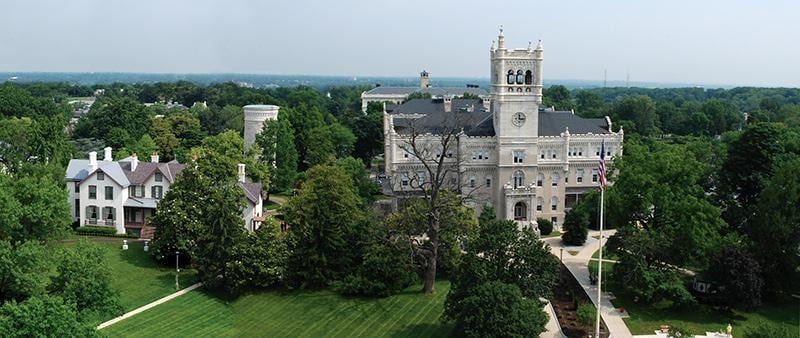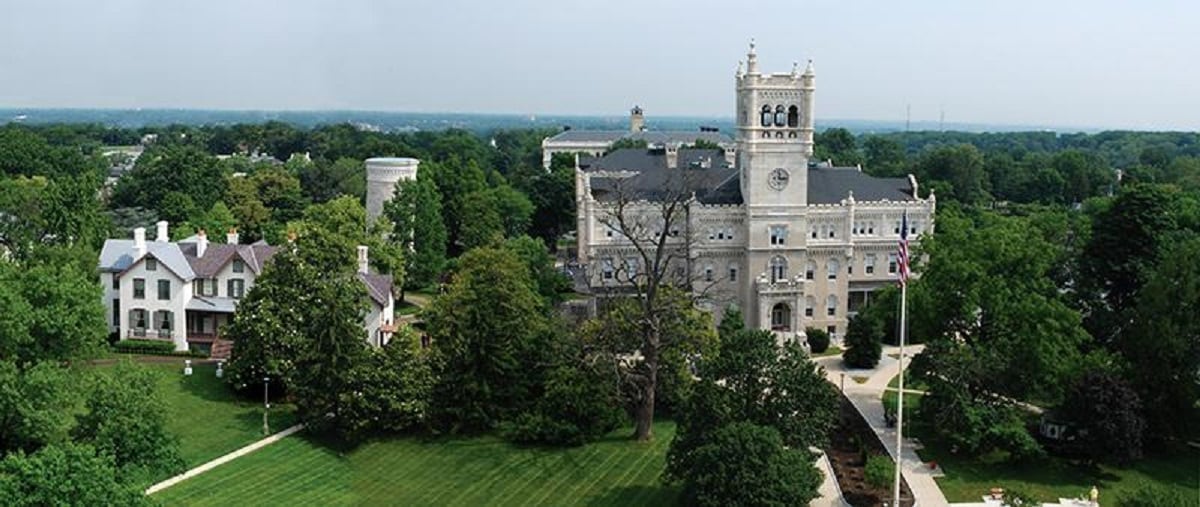A Defense Department agency dedicated to caring for aging enlisted veterans is facing financial shortfalls that could deplete its trust fund within 20 years and affect its ability to serve those retired and former service members, a government watchdog has found.
The number of residents living at the Armed Forces Retirement Home system has declined in recent years, as has revenue, even as expenses continue to increase, according to a recent Government Accountability Office report on the program, known for short as AFRH.
The Armed Forces Retirement Home is the only federal retirement home of its kind. It consists of two campuses in Washington, D.C. and Gulfport, Mississippi. To be eligible, veterans must have spent more than half of their time in the service as an enlisted member, warrant officer, or limited-duty officer, among other criteria.
Its operations are financed by resident fees, deductions from the pay of currently serving enlisted troops, warrant officers and limited duty officers, fines and forfeitures from military personnel who have disciplinary violations, investment interest income on the trust fund, gifts and other sources.
Among other prescriptions, the GAO recommends that Congress require the Defense Department increase the monthly 50-cent deduction taken from the paychecks of all serving enlisted personnel to fund the homes.
The recommendations come as the retirement homes struggle to increase revenue on their own. In October, AFRH officials scrapped a plan that was designed to bring in more income.
That plan sought to partner with the private sector to develop AFRH’s Washington-based property to generate millions of dollars in income from underused grounds and facilities.
But the project faced tough economic conditions between rising interest rates, inflation, supply chain challenges, and a struggling office market in D.C., officials said.
“It was clear that the financial benefit to the Home was now significantly diminished and the terms of the long-term lease were riskier to AFRH,” John RisCassi, the Home’s Chief Operating Officer, said in an October statement.
AFRH remains open to future collaboration, officials said.
Continuing financial struggles
The GAO’s findings aren’t new, as the retirement homes have faced financial struggles for at least the past decade.
AFRH is financed through a dedicated trust fund, but the balance in that trust fund dropped from $186 million at the end of fiscal 2010, to $46 million at the end of fiscal 2015, with officials citing building repairs and improvements costs, increasing expenses and declining revenues.
By 2022, the trust fund balance had been built back up to $107 million, largely because of infusions of taxpayer dollars — starting with $20 million in fiscal 2016, increasing to $25 million of taxpayer funds in fiscal 2022.
But the GAO report warns the trust fund is on track to being exhausted within 20 years without a “significant effort to bolster it.”
Agency officials agreed that significant steps are needed to fortify the trust fund, and stated in their 13-page response to GAO that they are proud of accomplishments over the last few years, such as increasing operating efficiencies and some revenue initiatives, even in the midst of the pandemic.
GAO auditors recommended that AFRH develop and implement policies and procedures for making better financial projections, build a plan for increasing occupancy levels at both campuses, develop and implement policies for estimating the cost of deferred maintenance and update its financial management policy.
Officials have been updating their financial policies and procedures and have been updating their admissions procedures as well.
AFRH officials have requested $68 million for operating expenses for fiscal 2024, and $8.9 million for maintenance and improvements, according to their budget justification documents. Those combined amounts include a $25 million boost of taxpayer funds. AFRH has been averaging revenues of about $47 million a year.
RELATED

Declining numbers of residents
While AFRH costs are increasing, the two homes are being used less as well, according to the GAO.
The occupancy rate has declined by 40% at the two campuses combined, according to GAO, shrinking from 1,028 residents at the end of fiscal 2014 to 611 at the end of 2022. The two campuses have a combined capacity of 1,120.
During that period, the occupancy rate at the historic Washington campus decreased from 85% to 38% capacity. AFRH officials told the GAO that they had purposely kept occupancy low as they prepare for a major renovation of one of the residential buildings. And the outlook is improving, as the number of admissions have picked up this year over the two campuses, they said.
Officials noted that “herculean mitigation efforts” were undertaken during the COVID pandemic, resulting in no resident deaths directly related to the pandemic. But the pandemic also had a major impact on occupancy, with about one-fifth of the number of new residents admitted in the first year of the pandemic compared to prior years.
One action the new leadership took was to raise residents’ fees, as has been recommended in a number of studies.
AFRH residents pay fees based on their level of care, and as a percentage of their monthly income. Veterans generally must enter AFRH at the independent living level. At that level, they pay a fee of almost 47 percent of their income, which includes all the amenities provided, from their residential space to three meals a day, wellness and community services, and health care. Those in memory care, the highest level of care, pay 70% of their income in monthly fees.
GAO auditors noted that across all levels of care, the average overall residential fee at AFRH is less than $1,900 a month. In comparison, they cite American Council on Aging statistics of the nationwide average for all levels of care at a life plan community as being more than $7,300 per month. AFRH officials agreed that their resident fees are lower than market, but also note that comparisons often fail to take into account average resident incomes, which may be lower in the veteran community.
Married couples can now apply to live at the AFRH campuses, if they meet certain conditions. Spouses also pay fees based on their individual incomes.
RELATED

Deteriorating facilities
AFRH is also facing more financial risks from costly repairs needed for deteriorating facilities, GAO auditors stated. AFRH officials noted they have received $37 million in taxpayer dollars over the last three years to tackle critical deferred maintenance projects for electrical, water, roofing, elevators, heating and air conditioning and other infrastructure. They also received $77 million in taxpayer dollars to modernize and expand units at the Washington campus principal residential Sheridan Building, and designs have been finalized for that renovation.
But previous AFRH officials had determined that a number of buildings on the AFRH Washington property were no longer useful to AFRH, and they had been included in the redevelopment plan. A majority of buildings in the development area are slated for demolition.
“AFRH, with congressional and administration support, has been working to dig out of its deferred maintenance hole to keep electricity running and water flowing on our operating assets, much less nonoperating ones, while at the same time responding to a devastating pandemic, economic disruptions, and the too-common budgetary instability of volatile capital budgets, funding lapses, continuing resolutions, and government-wide threats of across-the-board cuts,” AFRH officials stated in their response to the GAO.
“It would be a waste of resources to conduct complete assessments and preventive maintenance on structures planned for demolition.”
The way forward
AFRH has worked on proposals to improve AFRH’s financial situation without cutting services to its residents, and Congress should consider these proposals, auditors stated.
According to the GAO, Congress should consider continued infusion of taxpayer dollars, which amounted to about $25 million in 2023.
Lawmakers should also consider legislation to require the Defense Department to increase the monthly 50-cent payroll deduction from all currently-serving enlisted members, and adjust it for inflation in the future. The Defense Department has the authority under law to raise the deduction to $1 a month, but defense and service officials have not done so. The amount hasn’t changed since 1977. Enlisted members pay this each month while serving, regardless of whether they ultimately live in the homes. Adding an extra 50 cent deduction could bring in an estimated $7 million in extra revenue a year, according to GAO.
Legislation authorizing similar withholdings from National Guard and Reserve members, who in 2021 became eligible for residence at AFRH, should also be considered, according to the GAO, which could bring in an extra $7 million annually. DOD hasn’t been given authorization to withhold money from these service members for deposit into the AFRH trust fund.
Congress might also authorize the AFRH to get reimbursement from sources such as Tricare, Medicare and Medicaid for health care. Nearly all AFRH residents are eligible for Tricare, but AFRH doesn’t have the authority by law to seek reimbursement from Tricare or other federal health insurance programs. This would bring in an estimated $1 million to $4 million extra a year. AFRH provides residents with routine health care, and bears the costs of these services as an operating expense. AFRH officials said they are putting new health record systems into place that will improve health care coordination for residents, and better facilitate reimbursement for medical care provided on site.
Karen has covered military families, quality of life and consumer issues for Military Times for more than 30 years, and is co-author of a chapter on media coverage of military families in the book "A Battle Plan for Supporting Military Families." She previously worked for newspapers in Guam, Norfolk, Jacksonville, Fla., and Athens, Ga.




